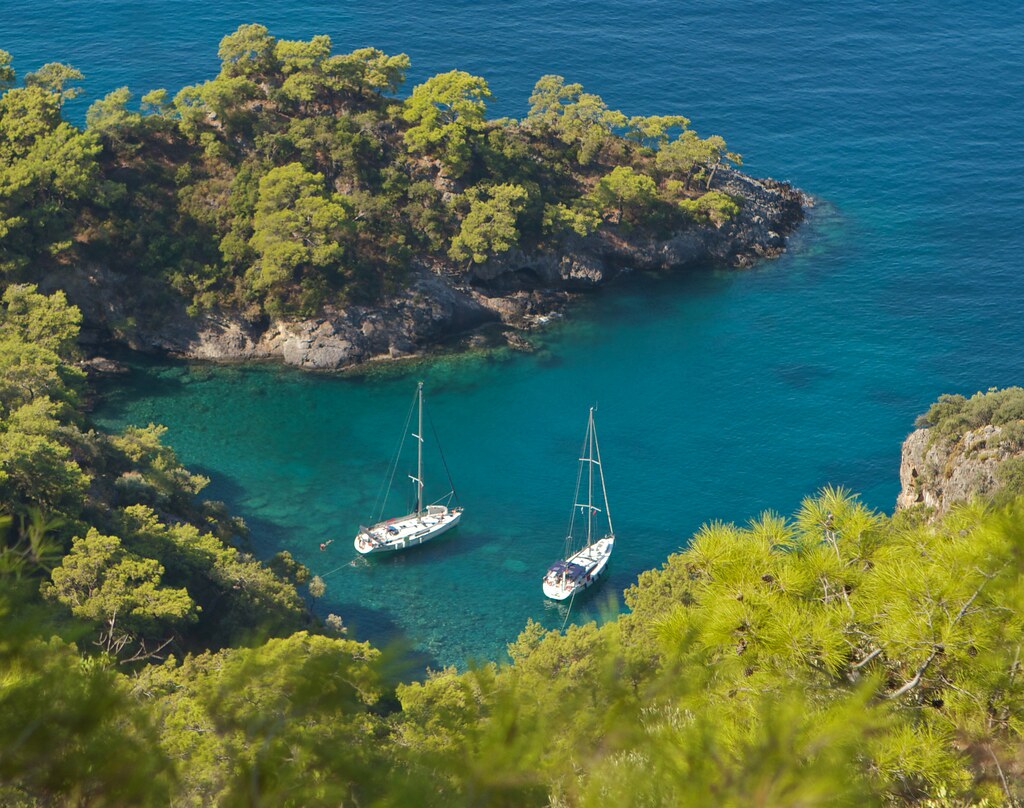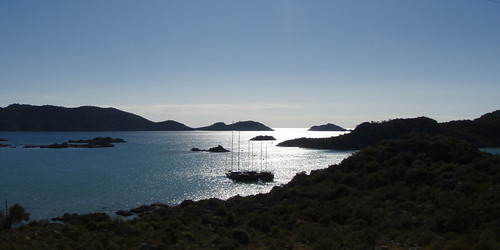Last Updated on January 1, 2016
While most people only visit Istanbul, Ephesus, Pamukkale and Capadoccia when traveling through Turkey, the region that deserves a whole 2-week vacation on its own is Lycia, the westernmost section of Turkey’s Mediterranean coast line.
Inland, Lycia’s pine tree covered mountains and forests are a hikers paradise, but the coastline of Lycia is the true star here. The region is also known as the Turquoise Coast, due to the crystal clear turquoise water of this stretch of the Mediterranean.
This area is also known for the ancient Lycian civilization, whose remnants can be seen throughout the U-shaped peninsula in the form of rock tombs and city ruins.
What makes Lycia so attractive in addition to its natural beauty and extraordinary coastline is the fact that it is a place that doesn’t cater only to all-inclusive tourists, but also to independent travelers. Of course you can still book vacation packages which include your flight to Dalaman (the regional airport), transport to the town of your choice and your hotel. But if you want to give independent travel a try in Turkey, you can easily arrange your own vacation. There are plenty of locally-run guesthouses, not just all-inclusive resorts.
You could even spend a walking vacation here, following the ancient Lycian Way, a 510 kilometers long footpath which goes from Ölüdeniz (a small town near the region’s largest city Fethiye) to Hisarcandir (about 20 kilometers from Antalya). Just choose the section of the path that sounds most interesting to you and stop to sleep in one of the gorgeous coastal towns along the way for the night, before continuing your journey the next morning.
Another way to explore Lycia’s magnificent coast is by yacht. The Turquoise Coast is famous for its Blue Voyage (Mavi Yolculuk), a two-week cruise on a gullet, the region’s typical two-masted wooden boats, during which you will sail from cove to cove along the coast. Choosing the Blue Voyage allows you to just jump into the warm Mediterranean waters wherever your boat drops anchor. Nothing beats seeing the sun rise and set from the boat, with the pine-covered mountains as a backdrop, and stopping for pleasant strolls in the fishing villages along the way. Good starting points for the Blue Voyage are Fethiye, Kas, or even Bodrum, in the Aegean Region.
If you prefer solid ground under your feet, choose from the many little towns along the coast which one suits you best. Some of your options are:
Fethiye: The biggest city in the region, with stunning Lycian ruins, a pretty old town and a gorgeous coastline.
Marmaris: Along with Fethiye the biggest and most touristy town in the region (with lots of nice resorts).
Kalkan: Another coastal town, famous for its whitewashed Mediterranean houses.
Kas: Coastal town with beautiful traditional architecture.
Ölüdeniz: Located in the Blue Lagoon of the Turquoise Coast, with fantastic beaches.
Olympos: The hippie and backpacker destination of the region.
Göcek: Located on a tip of a bay with many secluded coves and islands, this is a paradise for yachters.
How to get to Lycia
The easiest way to get to any of the cities in Lycia is to fly into Dalaman airport, which is close to all of the above mentioned towns.
When to go
Summer is packed with European tourists, so you could opt to visit in May or early June to have the coast almost to yourself, though the water is not warm enough to swim yet. That’s why a September or early October visit, just before most guesthouses close down for the winter, is best: you’ll be able to enjoy the warm water of the Mediterranean, less tourists and off-season prices on hotels or the Blue Voyage yachts.








